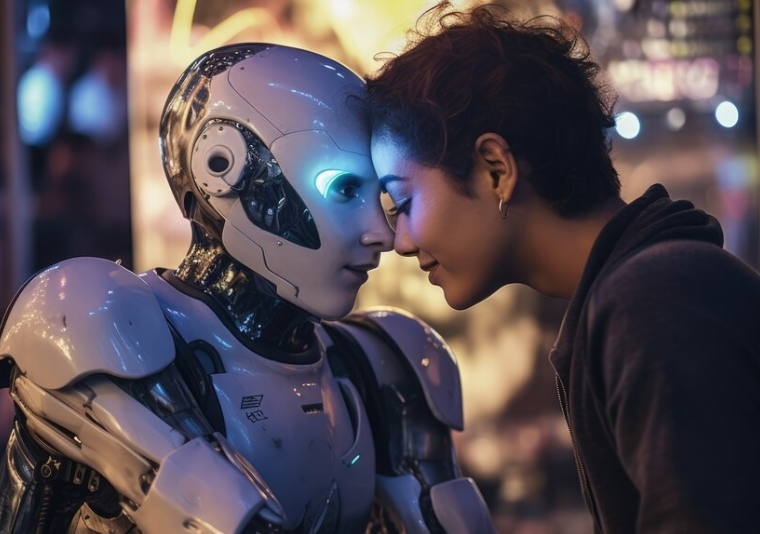AI chatbots have rapidly become a part of daily life, assisting in customer service, healthcare, education, and even personal conversations. Powered by advanced Natural Language Processing (NLP) and Machine Learning (ML), these chatbots are increasingly sophisticated, mimicking human-like conversations. But as AI chatbots continue to evolve, an important question arises: Are they replacing human interaction, or are they simply enhancing it?
The Growth of AI Chatbots
AI chatbots have grown in popularity due to advancements in deep learning and AI models like ChatGPT, Google Bard, and Meta’s Llama. These models can understand context, generate human-like responses, and even exhibit a degree of emotional intelligence. Businesses and organizations are using AI chatbots for a variety of purposes, including:
- Customer Support: Chatbots provide instant responses, reducing wait times for customers.
- Healthcare Assistance: AI-driven chatbots help patients schedule appointments and answer health-related queries.
- E-commerce & Retail: Virtual assistants help customers find products, place orders, and track deliveries.
- Education & Tutoring: AI tutors provide personalized learning experiences for students.
Benefits of AI Chatbots
1. 24/7 Availability
Unlike human agents, chatbots work round the clock, ensuring businesses can assist customers anytime, anywhere.
2. Instant Response & Efficiency
Chatbots handle multiple conversations simultaneously, reducing response times and improving efficiency.
3. Cost Savings for Businesses
By automating tasks, chatbots reduce operational costs, minimizing the need for large customer support teams.
4. Consistency in Communication
AI chatbots provide standardized responses, ensuring a consistent experience for users.
5. Personalization & Data-Driven Insights
Modern chatbots use AI to analyze user behavior, offering personalized recommendations and insights.
Challenges & Limitations of AI Chatbots
1. Lack of Emotional Intelligence
Despite advancements, AI chatbots still struggle to understand deep emotions and complex human feelings.
2. Limited Problem-Solving Abilities
AI chatbots excel at handling routine queries but may struggle with unique or complex situations that require human judgment.
3. Potential for Bias and Misinformation
Since AI models learn from data, they can inherit biases, leading to inaccurate or biased responses.
4. Privacy & Security Concerns
Chatbots handle sensitive data, raising concerns about user privacy and data security. Regulations like GDPR and CCPA require careful handling of personal information.
5. Dependency on Pre-Trained Data
AI chatbots rely on pre-existing data and may struggle with real-time, dynamic scenarios that require creativity and reasoning.
Are AI Chatbots Replacing Human Interaction?
While AI chatbots are transforming communication, they are not fully replacing human interaction—at least not yet. Instead, they serve as assistants that enhance and streamline communication.
Where Chatbots Enhance Human Interaction:
✔ Customer Support: Chatbots handle simple queries, allowing human agents to focus on complex cases.
✔ Healthcare: AI chatbots provide initial consultations, but doctors make the final decisions.
✔ Education: AI tutors assist students, but teachers remain essential for deeper learning.
Where Human Interaction Remains Crucial:
❌ Emotional Support: Chatbots can mimic empathy, but they lack genuine emotional understanding.
❌ Critical Decision-Making: In fields like law, medicine, and business strategy, human judgment is irreplaceable.
❌ Creative & Social Interaction: AI can generate ideas, but true creativity, humor, and human connection are unique to people.
The Future of AI Chatbots: Collaboration, Not Replacement
Instead of replacing humans, AI chatbots will continue to collaborate with people, improving efficiency while preserving the value of human connection. Future advancements will focus on:
- Better Emotional Intelligence: AI models will improve in understanding emotions and providing more empathetic responses.
- Seamless AI-Human Handoff: Businesses will integrate AI with human support to create a smooth transition between chatbot and human agents.
- More Ethical & Transparent AI: Regulations will push for responsible AI use to avoid misinformation and bias.
Conclusion
AI chatbots are revolutionizing communication, making interactions faster and more efficient. However, they are not replacing human interaction—rather, they are complementing it. While chatbots excel at automation and routine tasks, human connection remains irreplaceable in areas requiring empathy, creativity, and critical thinking.
The future is not AI vs. Humans—it’s AI + Humans working together to create a more efficient and connected world. 🚀


